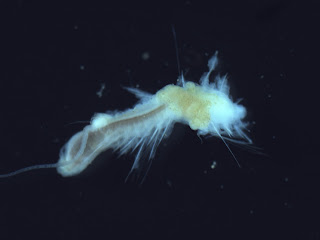The Portland's legacy

Evan Kovacs presenting ROV video footage from Portland The year was 1898. Just three days after Thanksgiving, New England would see the worst maritime disaster in the region's history. The passenger steamship Portland left Boston at 7 pm, bound for Portland, Maine. Meanwhile, the storm of two centuries swept up the North American coast, claiming shipwrecks in her wake. The Portland sailed straight into the storm, and none of the approximately 200 people on board survived. It's been 125 years since 1898 - well, 2023 was. Last October, my collaborators at Stellwagen Bank National Marine Sanctuary planned an event to commemorate the 125th anniversary of the sinking of the Portland . Unforeseen circumstances forced us to reschedule, but we were finally able to hold the event last weekend! Terry Wolkowicz from Sound Explorations sharing her music-based educational creation about Portland 's biological community. https://vimeo.com/842533494 We gathered in Portland, Maine, ...





